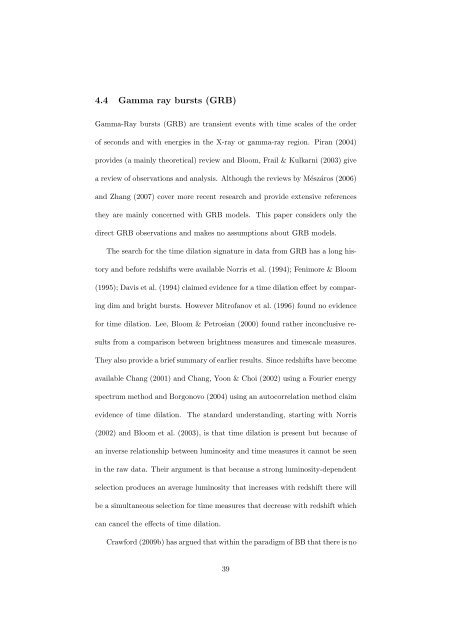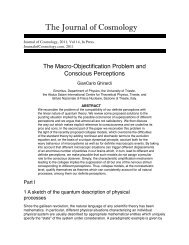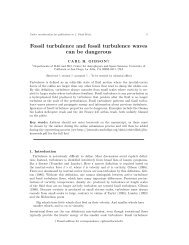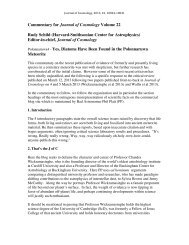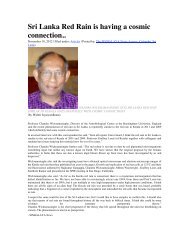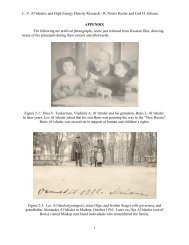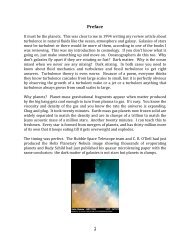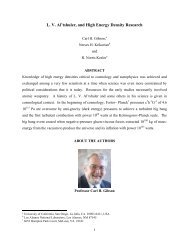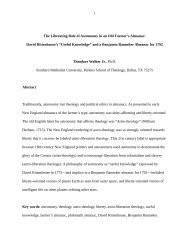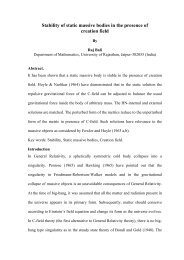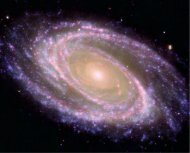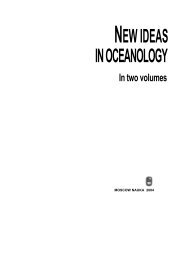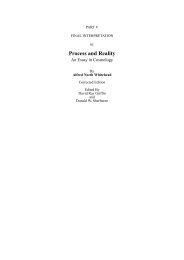Observational Evidence Favors a Static Universe - Journal of ...
Observational Evidence Favors a Static Universe - Journal of ...
Observational Evidence Favors a Static Universe - Journal of ...
Create successful ePaper yourself
Turn your PDF publications into a flip-book with our unique Google optimized e-Paper software.
4.4 Gamma ray bursts (GRB)<br />
Gamma-Ray bursts (GRB) are transient events with time scales <strong>of</strong> the order<br />
<strong>of</strong> seconds and with energies in the X-ray or gamma-ray region. Piran (2004)<br />
provides (a mainly theoretical) review and Bloom, Frail & Kulkarni (2003) give<br />
a review <strong>of</strong> observations and analysis. Although the reviews by Mészáros (2006)<br />
and Zhang (2007) cover more recent research and provide extensive references<br />
they are mainly concerned with GRB models. This paper considers only the<br />
direct GRB observations and makes no assumptions about GRB models.<br />
The search for the time dilation signature in data from GRB has a long his-<br />
tory and before redshifts were available Norris et al. (1994); Fenimore & Bloom<br />
(1995); Davis et al. (1994) claimed evidence for a time dilation effect by compar-<br />
ing dim and bright bursts. However Mitr<strong>of</strong>anov et al. (1996) found no evidence<br />
for time dilation. Lee, Bloom & Petrosian (2000) found rather inconclusive re-<br />
sults from a comparison between brightness measures and timescale measures.<br />
They also provide a brief summary <strong>of</strong> earlier results. Since redshifts have become<br />
available Chang (2001) and Chang, Yoon & Choi (2002) using a Fourier energy<br />
spectrum method and Borgonovo (2004) using an autocorrelation method claim<br />
evidence <strong>of</strong> time dilation. The standard understanding, starting with Norris<br />
(2002) and Bloom et al. (2003), is that time dilation is present but because <strong>of</strong><br />
an inverse relationship between luminosity and time measures it cannot be seen<br />
in the raw data. Their argument is that because a strong luminosity-dependent<br />
selection produces an average luminosity that increases with redshift there will<br />
be a simultaneous selection for time measures that decrease with redshift which<br />
can cancel the effects <strong>of</strong> time dilation.<br />
Crawford (2009b) has argued that within the paradigm <strong>of</strong> BB that there is no<br />
39


